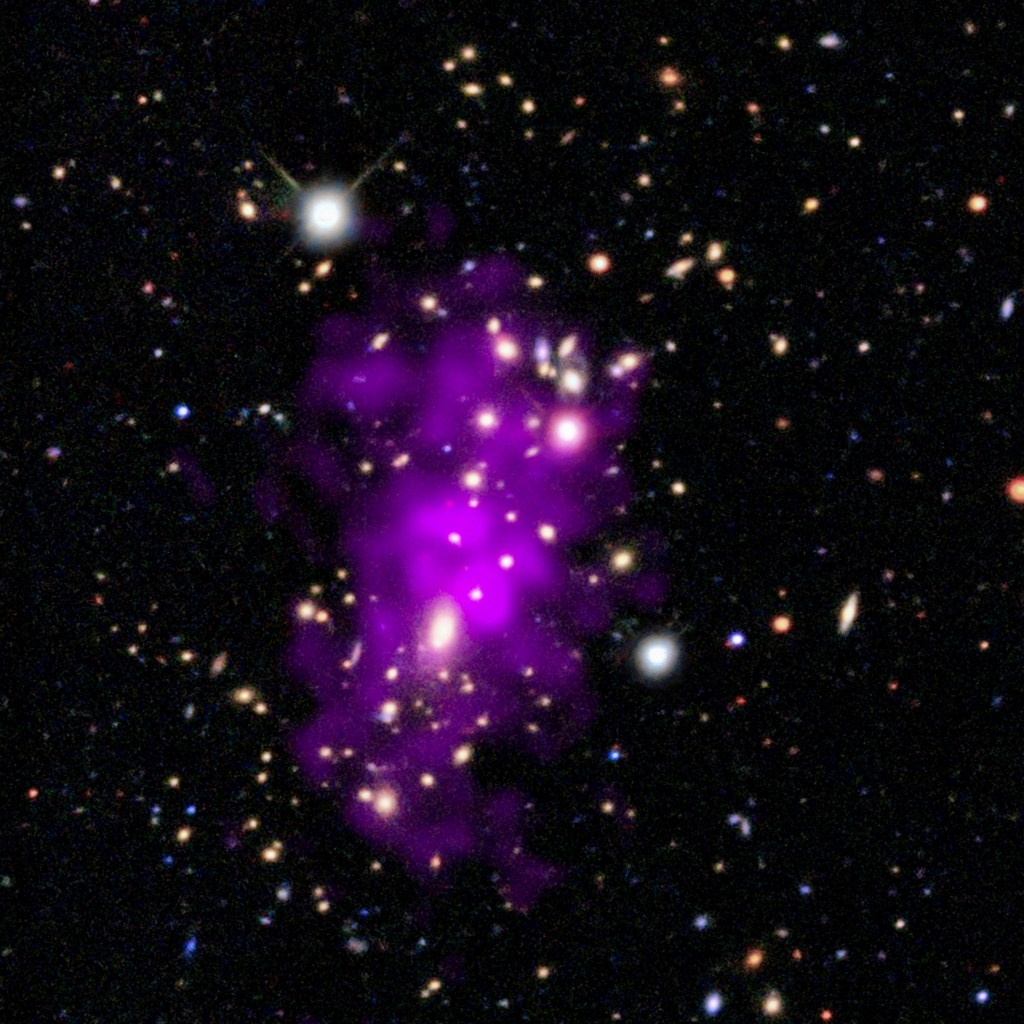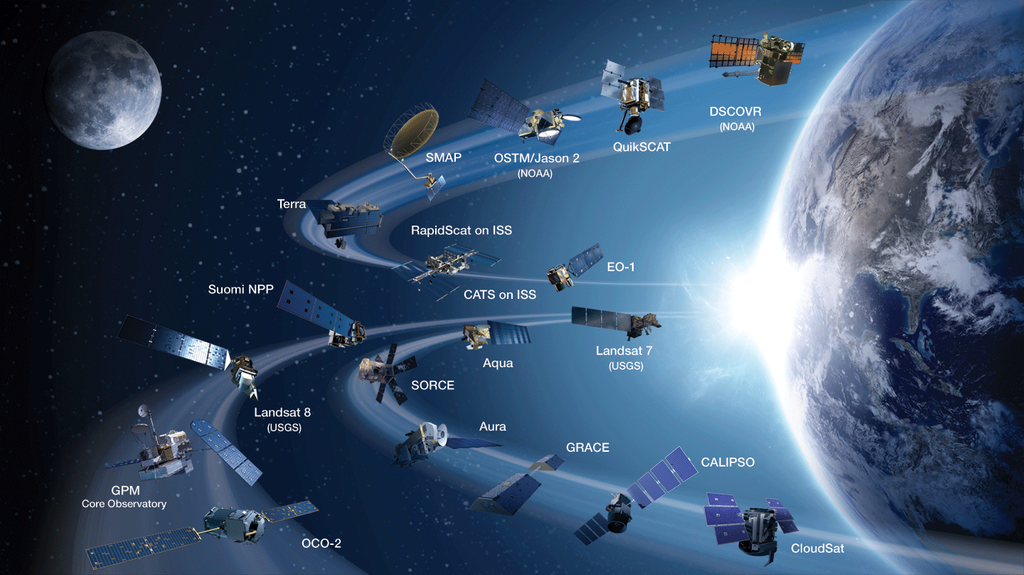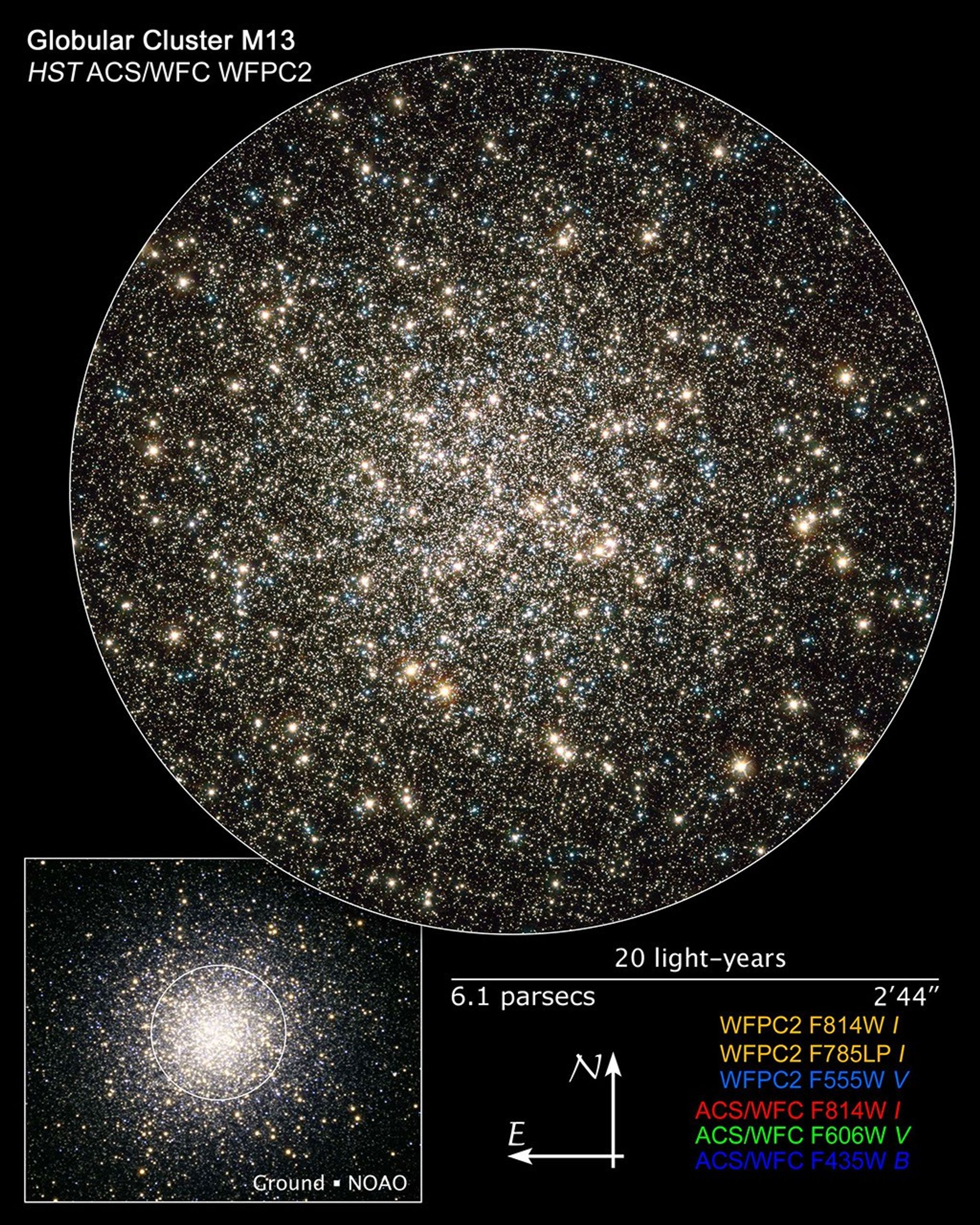1 min read
Hubble Image of M13’s Nucleus

About the Object
- R.A. PositionR.A. PositionRight ascension – analogous to longitude – is one component of an object's position.16h 41m 41.63s
- Dec. PositionDec. PositionDeclination – analogous to latitude – is one component of an object's position.36° 27' 40.71"
- ConstellationConstellationOne of 88 recognized regions of the celestial sphere in which the object appears.Hercules
- DistanceDistanceThe physical distance from Earth to the astronomical object. Distances within our solar system are usually measured in Astronomical Units (AU). Distances between stars are usually measured in light-years. Interstellar distances can also be measured in parsecs.25,000 light-years (7.6 kiloparsecs)
- DimensionsDimensionsThe physical size of the object or the apparent angle it subtends on the sky.This image is roughly 4.9 arcminutes (36 light-years or 11 parsecs) wide.
About the Data
- Data DescriptionData DescriptionProposal: A description of the observations, their scientific justification, and the links to the data available in the science archive.
Science Team: The astronomers who planned the observations and analyzed the data. "PI" refers to the Principal Investigator. - InstrumentInstrumentThe science instrument used to produce the data.HST>WFPC2 and HST>ACS/WFC
- Exposure DatesExposure DatesThe date(s) that the telescope made its observations and the total exposure time.November 1999, April 2000, August 2005, and April 2006
- FiltersFiltersThe camera filters that were used in the science observations.ACS/WFC: F435W (B), F555W (V), and F814W (I)WFPC2: F555W (V), F785LP (I), and F814W (I)
- Object NameObject NameA name or catalog number that astronomers use to identify an astronomical object.M13, NGC 6205
- Object DescriptionObject DescriptionThe type of astronomical object.Globular Cluster
- Release DateDecember 4, 2008
- Science ReleaseA Celestial Snow Globe of Stars
- CreditNASA, ESA, and the Hubble Heritage Team (STScI/AURA); Acknowledgment: C. Bailyn (Yale University), W. Lewin (Massachusetts Institute of Technology), A. Sarajedini (University of Florida), and W. van Altena (Yale University)

The image is a composite of separate exposures made by the ACS and WFPC2 instruments on the Hubble Space Telescope. Several filters were used to sample broad wavelengths. The color results from assigning different hues (colors) to each monochromatic image. In this case, the assigned colors are: Blue: ACS/WFC F435W (B), Green: ACS/WFC F555W (V) Red: ACS/WFC F814W (I) Cyan/blue: WFPC2 F555W (V), Yellow/orange: WFPC2 F785LP (I) + WFPC2 F814W (I)
Related Images & Videos

Hubble ACS/WFPC2 Image of Globular Cluster M13
Like a whirl of shiny flakes sparkling in a snow globe, Hubble catches an instantaneous glimpse of many hundreds of thousands of stars moving about in the globular cluster M13, one of the brightest and best-known globular clusters in the northern sky. This glittering metropolis...
Share
Details
Claire Andreoli
NASA’s Goddard Space Flight Center
Greenbelt, Maryland
claire.andreoli@nasa.gov
































